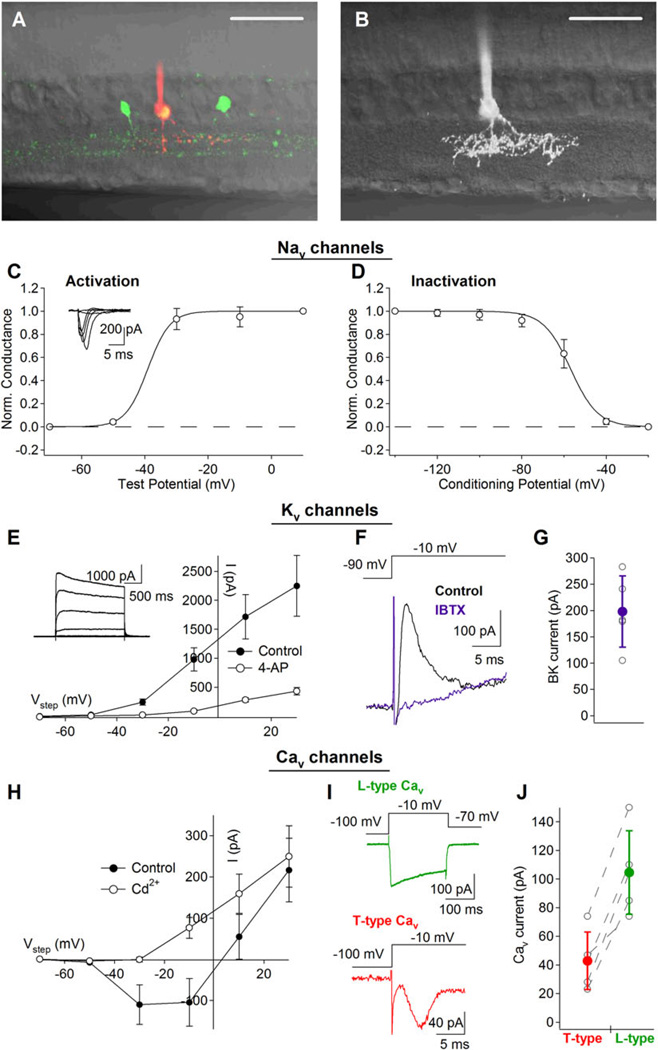Fig. 3.
Biophysical properties of active membrane (Nav, Kv, and Cav) conductances in VGLUT3+ amacrine cells. (A) Two-photon targeting of VGLUT3+ amacrine cells in retinal slices allowed for easier access to cell bodies for whole-cell recordings and a greater appreciation for the cell’s dendritic stratification. Scale bar: 50 µM. (B) Three-dimensional projection of a single VGLUT3+ amacrine cell superimposed upon a transmitted DIC image of the retinal slice. Scale bar: 50 µm. (C) and (D) Kinetic properties of 1 µM TTX-sensitive Nav currents. (C) Nav activation measurements were achieved by stepping the command potential to a series of test potentials (−70 to +10 mV in 20 mV increments; 200 ms steps) after a 200-ms conditioning prestep (to –100 mV; for partial relieve of channel inactivation). (D) Nav inactivation measurements (100 ms steps to −10 mV preceded by a 200-ms condition step to a range of potentials: −140 to −20 mV in 20 mV increments) suggest that many channels may be unavailable at typical resting membrane potentials. (E) Kv currents isolated from VGLUT3+ amacrine cells were active at potentials positive to −50 mV and were significantly reduced by application of 4 mM 4-AP. (F) In the presence of 4 mM 4-AP, a fast and transient outward current remained. This current was completely blocked by 100 nM Iberiotoxin indicating that it was mediated by rapidly inactivating BK channels. (G) Individual and average BK (i.e., Iberiotoxin-sensitive) current amplitudes (n= 5). (H) Cav currents were activated at potentials positive to −50 mV as indicated the block of inward current by 100 µM Cd2+ in the family of voltage steps (−70 to +30 mV in 20 mV increments; 200 ms). (I) Pharmacological analysis of the Cav current revealed that it was mediated primarily by L-type (top) and T-type (bottom) Cav channels. (J) Individual and average L-(Isradipine-sensitive) and T-(Mibefridil-sensitive) type currents (n= 5).

